For the past two Friday mornings I’ve traveled about ninety minutes north to see a ‘gross’ of Evening Grosbeaks that have been wintering in the Kawartha Lakes region of Ontario. It is the first time I’ve ever seen these birds and it was a treat to be able get a few good images of them. The first trip north resulted in only getting decent shots of the females, which created the ‘need’ to return the following week and try to get some respectable images of the males.
Although Evening Grosbeaks are seen sporadically in Ontario during the winter months, they are really quite a common bird with a North American population estimated at 6,000,000 birds. Even still, birders I met while photographing the Grosbeaks were excited to see then, with one life long birder telling me he hadn’t seen any since the mid seventies.
Evening Grosbeaks are approximately 8″ in length with wing spans of 14″ and are a very colourful bird as shown in the images below. They are known for their voracious appetite and can consume vast quantities of sunflower seeds which caused Andy Bezener to state that Evening Grosbeaks are “:an aesthetic pleasure and a financial curse” if they descend on to your back yard feeders. Morphologically the Grosbeaks dominant feature is its beak which is thought to be among the most powerful of any North American bird in terms of force generated per unit area. Although not true it was once thought that Evening Grosbeaks only sang in the evening, hence their name (vespertinus means ‘of the evening’).
The images that follow are of female Evening Grosbeaks and I will post the males as soon as I have processed them. These photos were all taken with at a focal length of 700mm and using a tripod. Even though high shutter speeds are used in bird photography, it becomes increasingly more important to stabilize the camera as the focal length increases. As a general rule you cannot hand hold your camera at shutter speeds below 1/focal length meaning you need shutter speeds of at least 1/50 sec if you are hand holding a 50mm lens and 1/700 sec if using a 700mm lens. Also big lenses are heavy and it becomes impossible to hand hold them for more than a minute or two. Now after all that technical stuff my recommendation is to always use a tripod for every image you capture as using a tripod forces you to take time to set things up and actually think about the shot you are taking, namely, how you would like it composed, what does the back ground look like and what camera settings do you need to achieve the desired image result. It has been said that the biggest difference between an amateur photographer and a professional is a tripod 🙂
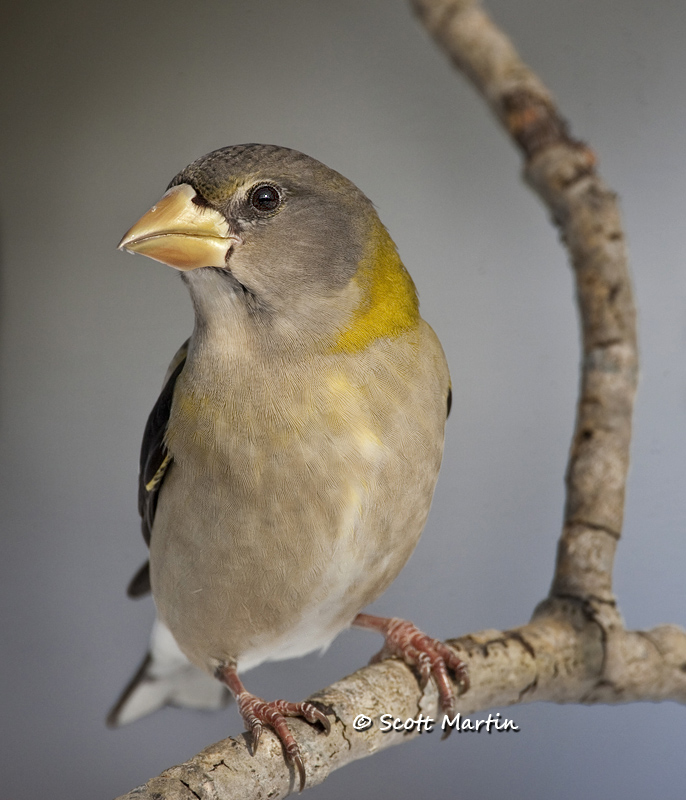
.
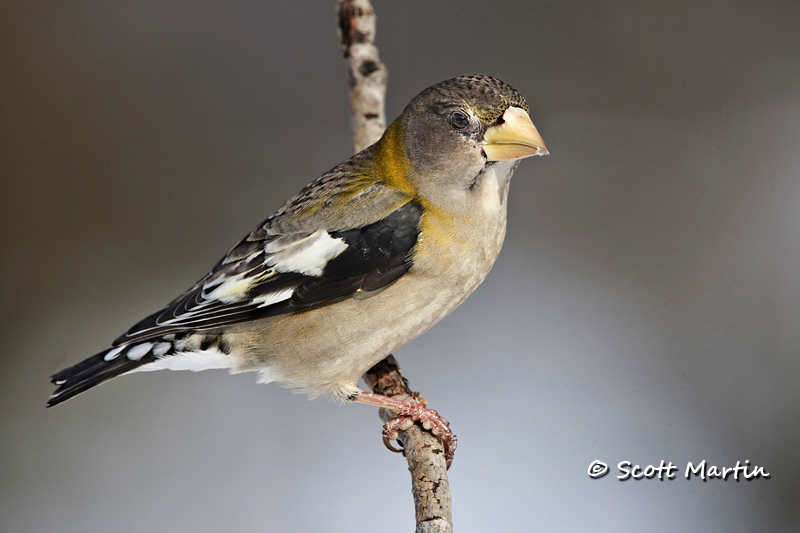
.
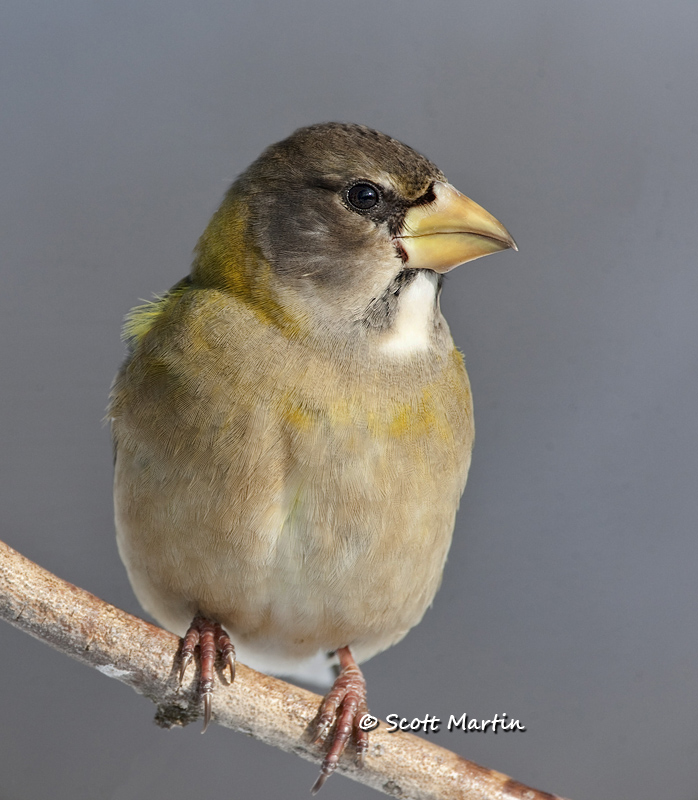
.
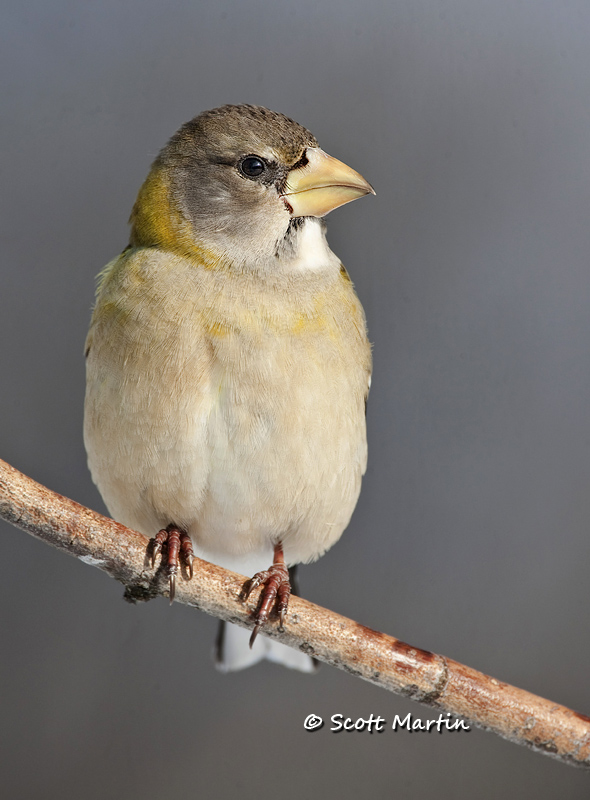
You can see similar birds in the Sparrows, Buntings, Grosbeaks & Finches Gallery

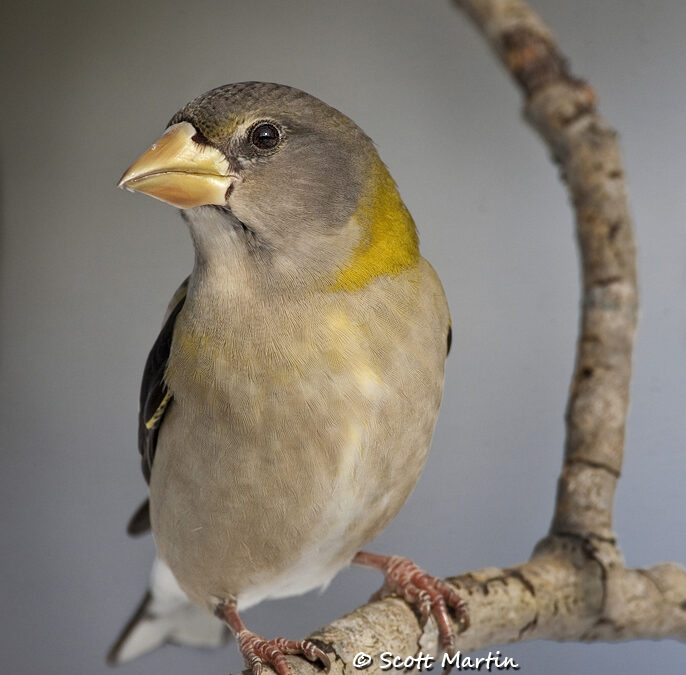
Great shots Scott. Thanks for sharing them and the info.
Great set of images Scott. I like the background information on the EvGr as well. I read somewhere that someone observed a male Grosbeak eat 90 sunflower seeds in 5 minutes. I’m sure Ginny appreciates all contributions!